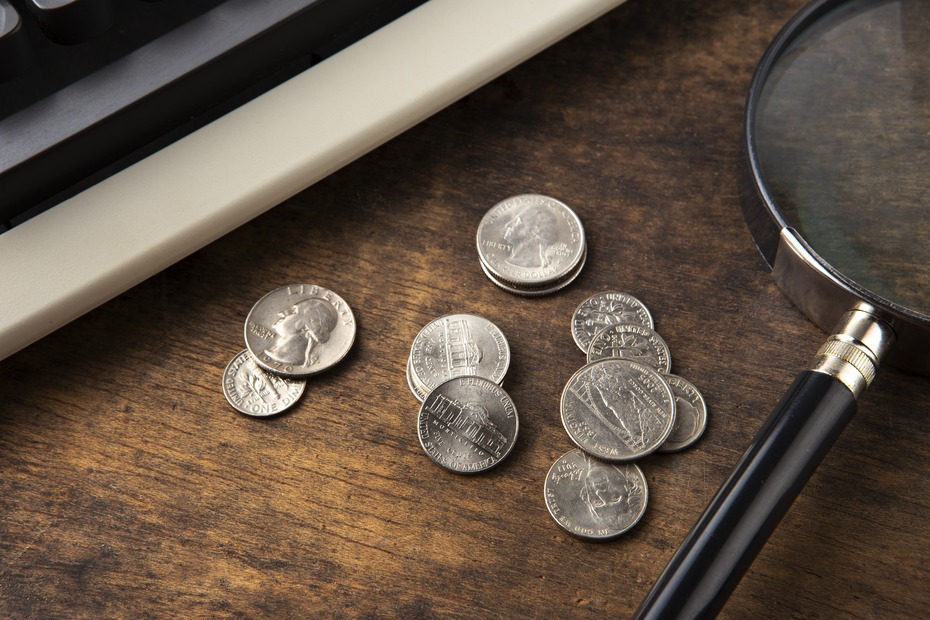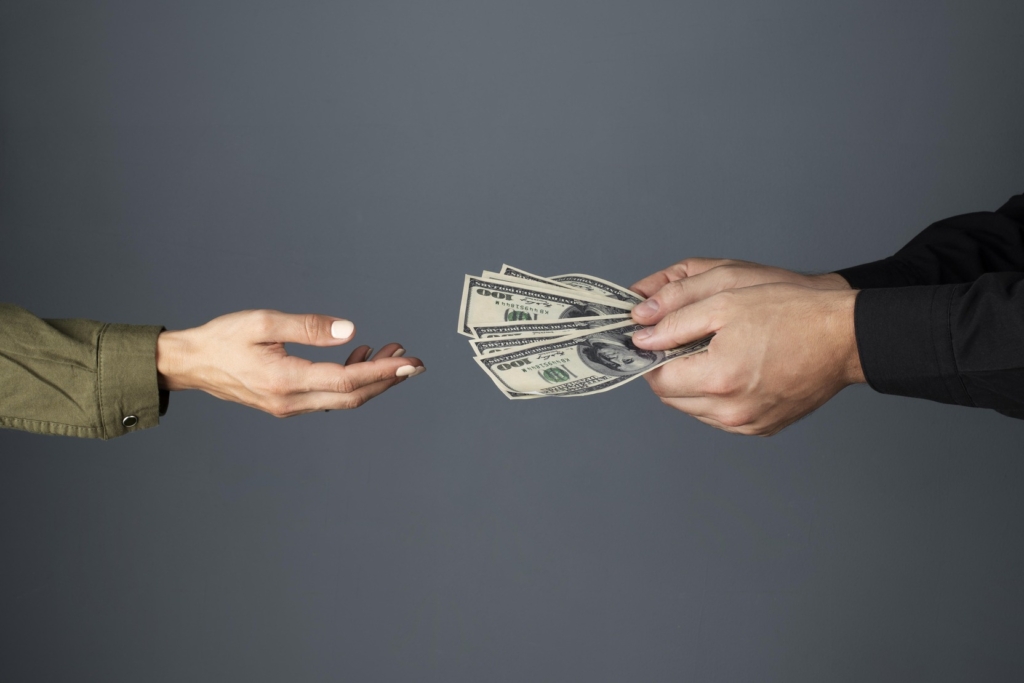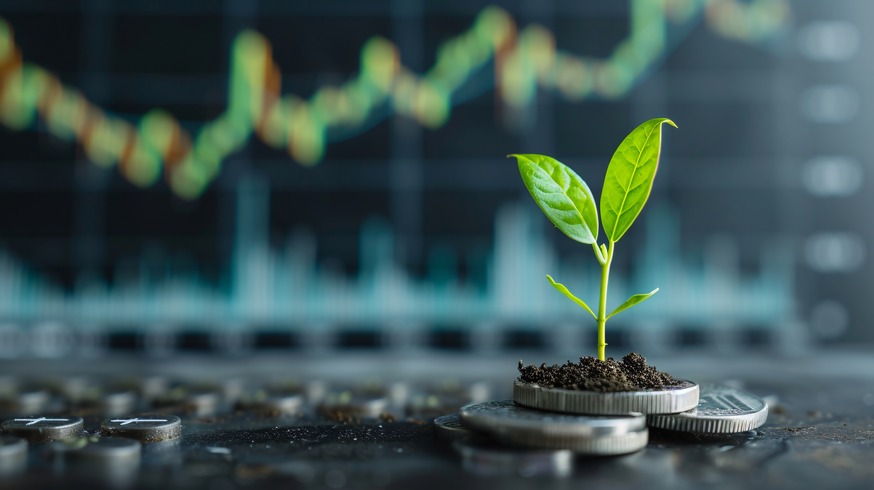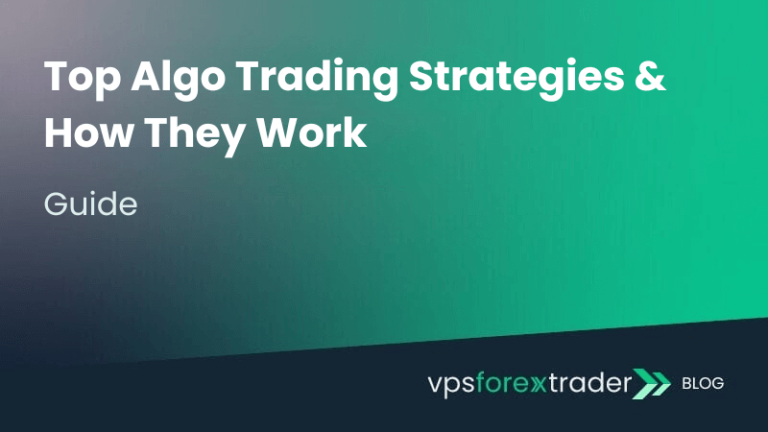Monetary policy is an important weapon in a central bank’s arsenal. Using this set of tools and strategies, the governments of various countries (through the central bank) control the amount of money in circulation to manage inflation and stimulate economic prosperity.
But Monetary policy isn’t an exact science. For almost all decisions a central bank makes, there’ll always be people on opposite sides. Hawkish and Dovish are two common opposite stances you’re likely to encounter as you try to give monetary policy meaning. In this article, we’ll discuss the meaning of these different policy positions and how they impact a country’s economy.

Hawkish Meaning in Economics
Before we compare the differences between hawkish and dovish, let’s start with the definition of hawkish. In ornithology, hawks have the reputation of being aggressive and vigilant. Based on this description, we get an idea of what hawkish mean in economics.
A hawkish approach to monetary policy follows the same principle in managing inflation. Like a hawk, this monetary policy stance keeps a sharp eye on inflation and is always keen on keeping it under control.
Hawks believe in hiking interest rates as a way of controlling inflation. This strategy is meant to discourage borrowing and spending, with the goal of reducing the amount of money in circulation as a critical strategy for controlling inflation.
Dovish: Definition and Impact on Monetary Policy
Doves are the opposite of hawks in terms of their character and aggressiveness. So what does this tell us about dovish meaning and its impact on monetary policy? The Dovish monetary policy stance is less aggressive towards inflation. If anything, doves believe inflation isn’t necessarily bad for the economy.
As a result, they favor milder monetary policies such as lower interest rates to stimulate borrowing, encourage spending, create jobs and boost the economy. Now that you’re familiar with hawkish and dovish definitions let’s dive deeper into their core differences.

Hawkish vs. Dovish: Key Differences Explained
The main difference between hawkish and dovish policy stance is in how they view inflation. The hawkish policy makers think inflation is bad and should be eradicated swiftly by hiking interest rates on loans and mortgages as soon as the economy begins to show signs of possible inflation. This will make borrowing more costly, effectively tightening the money supply.
The policymakers who take a dovish stance in the hawkish vs dovish argument tend to be more tolerant of inflation. That’s because their focus is on boosting the economy and they will risk inflation if their policies could potentially lead to economic growth and reduced unemployment.
Consequently, a dovish stance in a dovish vs hawkish argument will favor lowering interest rates to encourage borrowing and spending as a potential stimulus for economic growth. The Lower rates will make borrowing cheaper for businesses and stimulate business investment.
How Hawkish Policies Affect Inflation and Growth
As explained above, the hawkish monetary policy focuses on inflation control rather than economic growth. Hawkish policymakers argue that economic growth will be worth less if inflation is allowed to run wild and erode the currency’s purchasing power. As a result, controlling inflation in the short term is of higher priority to them. By increasing interest, these policies limit credit, which can have deflationary effects that may result in future benefits for the economy.
While a hawkish stance tends to yield results in reducing inflation, it directly stifles economic growth. Reducing the amount of money in circulation will slow down economic activity such as consumer spending, investment and business spending in the short term.

The Role of Dovish Policies in Economic Expansion
Based on our definition of what does dovish means, we can see that policy policymakers are cultivators of the economy. The dovish monetary policy focuses on economic expansion by encouraging more economic activity even if it comes at the cost of a higher inflation rate. This is particularly important for periods when the economy needs to be boosted directly such as during a recession.
Understanding the Central Bank’s Stance: Hawkish or Dovish?
For central banks, picking a side between the hawkish vs dovish argument isn’t really straightforward. The central bank may assume a hawkish monetary stance or the opposite based on a comprehensive assessment of the economic situation at the time.
It is a balancing act that involves considering not just the inflation rates, but also employment and overall condition of the economy. Central banks may also begin with an economic stance, then switch over time as the situation evolves. Generally, monetary policies vary for different countries and that’s because central banks have specific objectives for their respective economies which will influence their position.
Real-Time Examples & Historical Case Studies
Understanding the theory behind hawkish and dovish monetary policy is useful, but seeing how these policies have played out in real economies makes the concepts far more tangible. Here are several important examples from different eras that demonstrate how central banks shift between the two stances – and the ripple effects on markets worldwide.
1. Paul Volcker’s “Hawkish Shock” – The 1980s Fight Against Inflation
- Period: 1979–1982
- Central Bank: U.S. Federal Reserve
- What Happened:
During the late 1970s, U.S. inflation surged above 13%, driven by oil price shocks and rapid wage growth. Paul Volcker, then Fed Chair, adopted one of the most hawkish monetary policies in history. - Key Actions:
- Increased the federal funds rate from around 10% in 1979 to over 20% by 1981.
- Intentionally slowed economic growth to force inflation down.
- Results:
- Triggered two short recessions but successfully brought inflation below 4% by 1983.
- Bond yields rose, the U.S. dollar strengthened sharply, and global capital flows shifted toward U.S. assets.
- Takeaway for Traders:
Aggressive hawkish policy can strengthen a currency, lift bond yields, and weigh on equity markets.
2. The Great Financial Crisis – Dovish Policy at Full Force (2008–2014)
- Period: Post-2008 Global Recession
- Central Bank: U.S. Federal Reserve + Other Majors (ECB, BOE, BOJ)
- What Happened:
After the collapse of Lehman Brothers and the housing market crash, global economies faced a severe deflationary threat. Central banks pivoted to extremely dovish policies to stabilize financial systems. - Key Actions:
- Cut interest rates close to 0%.
- Introduced Quantitative Easing (QE) – massive bond-buying programs to inject liquidity.
- Extended emergency lending programs to keep credit markets alive.
- Results:
- Stock markets recovered rapidly starting in 2009.
- U.S. Treasuries and gold rallied as safe-haven assets.
- The U.S. dollar initially weakened, then stabilized as global recovery took hold.
- Takeaway for Traders:
Dovish policies tend to depress yields, boost risk assets, and weaken the currency – at least initially.
3. COVID-19 Pandemic Response – Dovish Policy at an Unprecedented Scale
- Period: 2020–2021
- Central Banks: Fed, ECB, BOE, BOJ, RBA
- What Happened:
As the pandemic disrupted global economies, central banks unleashed record-breaking dovish measures. - Key Actions:
- Interest rates slashed to near-zero levels almost instantly.
- Trillions injected through QE, business lending, and stimulus checks.
- Coordinated policy responses across multiple central banks.
- Results:
- Asset prices skyrocketed, with stock indices hitting record highs.
- Commodities, especially oil and gold, became highly volatile.
- Cryptocurrencies saw explosive growth due to cheap liquidity.
- Takeaway for Traders:
Ultra-dovish conditions often create risk-on environments, benefiting equities and speculative assets – but they can also inflate bubbles.
4. The 2022 Inflation Surge – Hawkish Turns Worldwide
- Period: 2022–2023
- Central Banks: Fed, ECB, BOE, RBA, BOC
- What Happened:
After years of loose policy, inflation spiked globally to multi-decade highs – driven by supply chain disruptions, energy price shocks, and pandemic stimulus effects. - Key Actions:
- The U.S. Fed raised rates aggressively from 0.25% in March 2022 to over 5% by mid-2023.
- Other major central banks followed suit with rapid hikes.
- Results:
- The U.S. dollar strengthened significantly, hitting 20-year highs against many currencies.
- Emerging markets saw capital outflows and increased financial stress.
- Stock markets experienced sharp corrections, while bond yields surged.
- Takeaway for Traders:
Hawkish pivots in tightening cycles can strengthen the home currency, pressure stocks, and trigger global capital rebalancing, monitor these shifts 24/7 with automated tools on a reliable Forex VPS for timely execution.
Emerging Terms & Policy Nuance (e.g., “Pigeons”)
When people talk about hawkish and dovish central bankers, it often sounds like monetary policy exists in two strict camps:
- Hawks want tighter policy and higher interest rates.
- Doves prefer looser policy and lower interest rates.
In reality, central bankers rarely fit neatly into one box. Their positions shift depending on economic conditions, data, and political context. Over time, analysts have adopted more nuanced terms to describe these stances – including the emergence of a third category: “pigeons.”
1. The Hawk-Dove Spectrum
Rather than treating hawks and doves as opposites, think of monetary policy as a spectrum:
- Hawks → Focus on fighting inflation, willing to slow growth if necessary.
- Doves → Focus on stimulating growth and employment, even if inflation rises slightly.
- Centrists (“Pigeons”) → Shift positions based on incoming data, balancing both inflation and employment goals.
For traders, this matters because central bankers can switch stance mid-cycle when conditions change. A policymaker considered hawkish today could become dovish six months later if economic risks shift.
2. Who Are the “Pigeons”?
The term “pigeons” refers to policymakers who don’t consistently lean hawkish or dovish but take a data-dependent, balanced approach.
Key Characteristics:
- Flexible: Open to tightening or easing policy depending on economic signals.
- Pragmatic: Weigh inflation, employment, and financial stability equally.
- Market-Sensitive: More likely to adjust based on investor sentiment and global conditions.
Example:
- Jerome Powell (Chair of the U.S. Federal Reserve) is often labeled a pigeon.
- In 2018, Powell leaned hawkish with steady rate hikes.
- In 2020, he pivoted sharply dovish during the pandemic.
- In 2022, faced with soaring inflation, he became hawkish again.
This adaptability reflects the data-driven reality of modern central banking.
3. Why Nuance Matters for Traders
Central bank policy isn’t black and white. Markets react strongly to policy expectations, not just official rate changes. Recognizing pigeon-like behavior helps traders avoid surprises.
Example Impacts:
- Forex Markets:
- Hawkish turns typically strengthen a currency as investors anticipate higher returns.
- Dovish pivots often weaken a currency due to lower yields.
- Pigeon-like stances create volatility, as traders constantly reassess central bank signals.
- Stock Markets:
- Hawkish shifts can pressure equities.
- Dovish leanings usually support risk assets.
- Pigeon behavior can keep investors on edge and drive choppy trading ranges.
4. Beyond Pigeons: Other Sub-Categories Analysts Use
To add further nuance, economists sometimes use additional labels for central bank behavior:
| Term | Policy Style | Stance Description |
|---|---|---|
| Uber-Hawk | Extremely hawkish | Will prioritize inflation control at almost any cost |
| Hawkish Tilt | Mostly hawkish but mildly cautious | Prefers tightening but open to slower hikes |
| Pigeon | Balanced & data-driven | Switches between stances based on conditions |
| Dovish Tilt | Mostly dovish but slightly cautious | Supports easing but willing to pause |
| Uber-Dove | Extremely dovish | Aggressively prioritizes growth and liquidity |
Monetary Policy People & Philosophies: From Hawks to Doves to Pigeons
Central bank policies don’t just emerge from data models – they’re shaped by the people behind the decisions. Each policymaker brings their own economic philosophy, personal experience, and risk tolerance into the discussion. These factors often explain why some central bankers lean hawkish, others dovish, and some position themselves in the middle as “pigeons.”
Understanding these tendencies is critical for traders, because monetary policy decisions are not purely mechanical – they’re influenced by beliefs and priorities.
1. Hawks – The Inflation Fighters
Philosophy:
Hawks believe that price stability is the foundation of long-term economic growth. They view high inflation as an economic threat and are willing to sacrifice short-term growth to bring prices under control.
Common Traits of Hawks:
- Concerned about rising prices and purchasing power erosion.
- Prefer higher interest rates to slow borrowing and spending.
- Often have backgrounds in macroeconomics, finance, or fiscal conservatism.
Examples of Hawkish Leaders:
- Paul Volcker (Former Fed Chair, U.S.): Famous for hiking rates above 20% in the early 1980s to defeat runaway inflation.
- Christine Lagarde (ECB President, selectively hawkish): Has adopted tightening policies to combat surging eurozone inflation in recent years.
- Andrew Bailey (BOE Governor): Pushed aggressive hikes when UK inflation hit 40-year highs.
Market Impact:
- Hawkish policies often strengthen the currency due to higher yields.
- Stock markets may struggle in tightening cycles.
- Safe-haven flows into bonds tend to increase during sustained hawkish phases.
2. Doves – The Growth and Employment Advocates
Philosophy:
Doves prioritize economic growth and job creation over controlling inflation, especially when unemployment is high or economic activity is weak.
Common Traits of Doves:
- Willing to tolerate moderate inflation to stimulate demand.
- Support lower interest rates and liquidity injections.
- Often come from labor economics, academia, or fiscal policy backgrounds.
Examples of Dovish Leaders:
- Janet Yellen (Current U.S. Treasury Secretary, Former Fed Chair): Known for prioritizing maximum employment during her time at the Fed.
- Haruhiko Kuroda (Former BOJ Governor): Maintained ultra-low interest rates and aggressive stimulus for decades to fight deflation.
- Mario Draghi (Former ECB President): Famously said, “Whatever it takes” during the eurozone debt crisis, committing to full support for growth.
Market Impact:
- Dovish policies weaken the currency due to lower yields.
- Stock markets typically benefit from lower borrowing costs.
- Commodities and high-risk assets often rally as liquidity increases.
3. Pigeons – The Pragmatic Centrists
Philosophy:
Pigeons represent a balanced, data-driven approach. They’re neither strongly hawkish nor consistently dovish. Instead, they adapt to changing economic realities, shifting policy stances when conditions require.
Common Traits of Pigeons:
- Open-minded and data-dependent decision-making.
- Will raise rates when inflation spikes but ease policy when growth slows.
- Frequently prioritize financial stability alongside inflation and employment goals.
Examples of Pigeon-Like Policymakers:
- Jerome Powell (U.S. Fed Chair):
- Hawkish in 2018 during a strong economy.
- Pivoted dovish in 2020 during the COVID-19 crisis.
- Returned to hawkish policies in 2022 to control inflation.
- Philip Lowe (Former RBA Governor): Balanced policy decisions between maintaining growth and controlling housing-driven inflation in Australia.
Market Impact:
- Creates volatility as markets constantly adjust to shifting tones.
- Signals uncertainty, making forward guidance harder to interpret.
- Can lead to sharp currency moves when data surprises markets.
4. Why Personal Philosophy Matters for Traders
For traders, central bank decisions are major catalysts for price movements across currencies, bonds, commodities, and equities. But understanding why a policymaker favors certain actions provides an edge:
| Philosophy | Focus | Likely Actions | Effect on Currency | Effect on Stocks |
|---|---|---|---|---|
| Hawk | Price stability | Aggressive rate hikes | Strengthens | Typically negative |
| Dove | Growth & jobs | Low rates, QE, stimulus | Weakens | Typically positive |
| Pigeon | Balance & stability | Data-dependent adjustments | Mixed / volatile | Mixed / volatile |
By analyzing who’s making the decision and their historical patterns, traders can better anticipate how markets might react – sometimes before the official announcements.
FAQs
What does hawkish mean in monetary policy?
A hawkish stance in monetary policy takes an aggressive stance towards managing inflation. This approach focuses on reducing inflation by increasing interest rates and reducing the amount of money in circulation regardless of its immediate impact on the economy.
What is dovish in economics?
The dovish approach to monetary policy management favors easy-money strategies that promote economic growth regardless. This strategy often involves lowering interest rates to stimulate spending and borrowing.
What is the difference between hawkish and dovish?
The primary difference between hawkish vs dovish is their stance on inflation and interest rate management. Hawkish favors increasing interest rates to lower inflation while a dovish approach lowers it to stimulate the economy.
How do hawkish policies impact inflation?
Hawkish policies have a deflationary effect on inflation, by reducing borrowing, the amount of money in circulation becomes lower, reducing inflation in the short term.
What does a dovish approach indicate about interest rates?
A dovish approach lowers the interest rate with the goal of boosting economic activities.
What is the antonym of dovish?
The antonym of dovish is hawkish.
How do central banks use hawkish or dovish stances?
A central bank’s position in the dovish vs hawkish argument often changes to accommodate the needs of the economy at any given time. Central banks often shift between both strategies by considering their short and long-term impacts.




